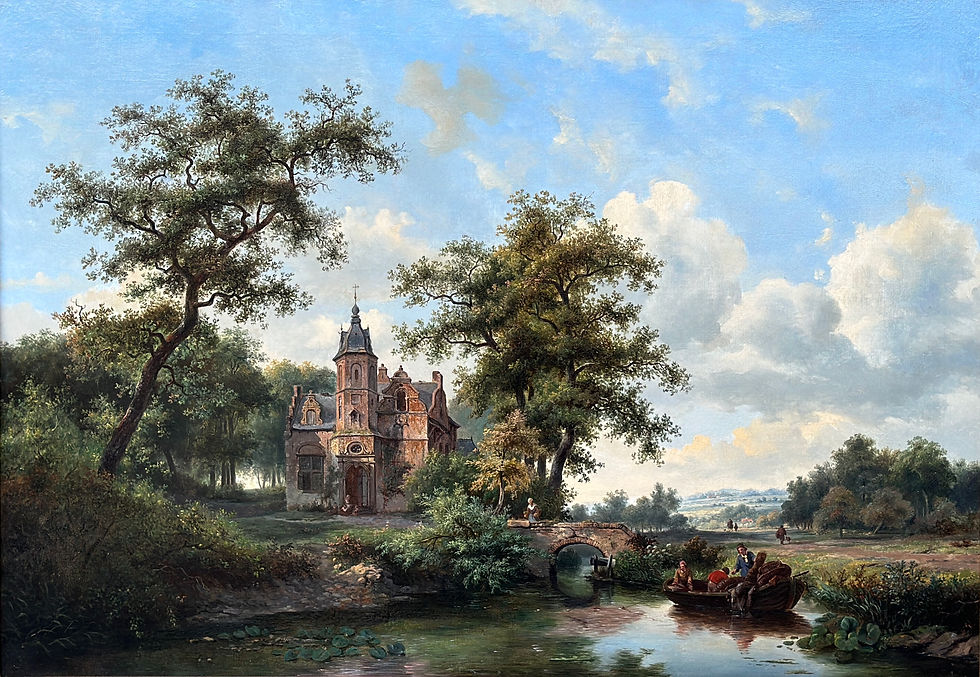Frederik Marinus Kruseman (1816-1882)
Summer landscape with castle
Oil on canvas
Holland, 1851
69 x 98.5 cm
Framed
Signed and dated 1851 b.l.
Provenance
- Mak van Waay Amsterdam 5-6-1973, lot 156
- Private Collection Belgium
Summer scene
The painting depicts a serene and picturesque scene of a castle on the water.
The castle is surrounded by trees and hills in the background and has a tower that stands out against the sky.
The water reflects the light and colors of the landscape, creating a harmonious contrast.
In the right foreground a group of fishermen sit in a boat with their nets and tools. There is a woman with 3 children sitting in front of the castle. Another woman stands on the bridge.
In the fields people go home on horseback with dogs. The painting captures the beauty and tranquility of nature, as well as the simple and honest life of the workers.
Frederik Marinus Kruseman
Frederik Marinus Kruseman (November 12, 1816 – May 7, 1882) was a Dutch painter of the 19th century, born in Haarlem. He is considered a leading member of the Romantic painting movement in the Netherlands and is known for his beautiful landscapes, historical scenes and portraits.
Kruseman grew up in an artistic family. His father, Jan Adam Kruseman, was a noted portrait painter, and this early exposure to art formed the basis of his own artistic development. At an early age he showed a remarkable talent for painting, and his father encouraged him to further develop his skills.
At the age of nineteen, Kruseman entered the Royal Academy of Fine Arts in Amsterdam, where he received his artistic training. During his studies, he was inspired by the Romantic movement, which sought to express emotion and imagination in art. These influences would greatly influence his later work.
Kruseman made several trips through Europe, including to Germany and Italy, where he was inspired by nature, architecture and historic landscapes. These travels contributed to the diversity of his work and gave him new perspectives on color and composition.
In 1843, Kruseman made his debut at the Exhibition of Living Masters in The Hague, which led to recognition and appreciation for his artistic talent. He developed into a valued artist and his work was regularly exhibited at home and abroad.
Kruseman was adept not only at painting romantic landscapes, but also at capturing the human soul in portraits. He managed to capture emotion and depth, making his portraits more than just realistic representations of his subjects.
In addition to his painting activities, Kruseman was also involved in the founding of the Haarlem Etching Club in 1856, where artists came together to explore the art of etching.
Frederik Marinus Kruseman died at the age of 65 on May 7, 1882, but his artistic legacy lives on. His works can still be admired in museums and private collections, and they testify to the profound influence that this romantic painter had on Dutch art history.
